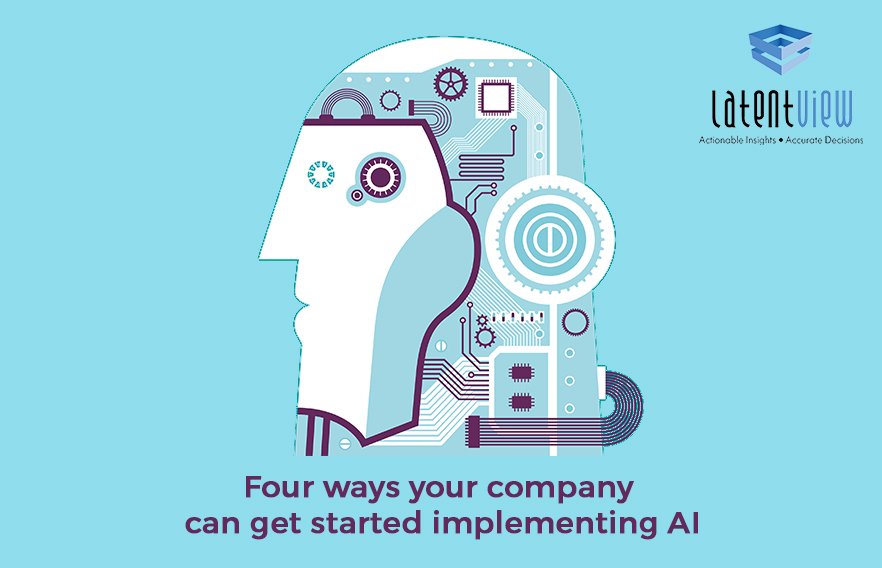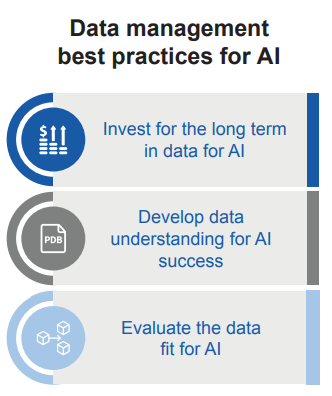Artificial intelligence (AI) has changed the rules of the game. AI can be used to extract new insights, transform decision making and enable improved business outcomes. Getting the most out of AI investments requires looking beyond technology by getting to the heart of business transformation. Staying ahead in the rapidly evolving Artificial Intelligence race requires business leaders to make fast, and informed decisions about where and how to deploy AI in their business.
AI initiatives should be allied to specific, well-defined opportunities and problems to have maximum impact. Significant investment is necessary in building skills, processes and tools to successfully exploit AI’s true potential.
The key areas that organization seeking to deploy AI should consider:
- Determine what AI means for your business
It’s important to first begin with defining your strategic objectives for AI. Start by identifying the problem and defining how AI can help in solving it. Research on the technological developments and competitive pressures coming up within your sector, with specific questions such as: How soon will change arrive, and how you will respond to it? It’s also important to identify the operational pain points that AI techniques could address, and at the same time identify the game-changing opportunities AI can open-up within your market. - Identify a clear business application
AI initiatives should be linked to specific, well-scoped opportunities, problems and issues to have maximum impact. Get the most of your AI investment by aligning strategy to address problems that have challenged the organization historically and where AI appears to present a novel opportunity. Organizational collaboration is critical to identifying the business problem to solve. Also, data that’s well-suited to addressing the problem should be readily available. To prioritise where you will implement AI, it is important to map the key process flows that need to be automated and decision flows that need augmentation. Evaluate many use cases in which AI could drive specific business value and then consider testing with one or two high-impact business units.
To initiate AI-based automation in your business, consider the tasks which satisfy the following criteria: - Build a data culture for AI
Artificial Intelligence is enabled by data. Identify the data source and focus on collecting the data from the relevant touchpoints. A major limitation faced by AI systems is low quality of data and not less volume of data. Given the pervasive nature of artificial intelligence, the consequence of it getting data “right” or “wrong” is significant. A common misconception is that algorithms and functionalities are more important than data in AI-powered applications. In fact, the two are inseparably linked—without the right data, building models is risky and possibly dangerous. Data enables AI technologies to learn how humans think and feel, and accelerates their learning curve, ultimately making them more accurate.Data is your primary asset and source of intellectual property, hence it’s important to assess what changes and investments can enable the organization to capture more and better quality of data. It’s also important to actively collect data assets unique to your core business process or identified as critical to delivering business outcomes. Managing data in support of AI is not a one-off project, but an ongoing activity that should be formalized as part of your organization’s data management strategy. - Make sure you have the right talent
One of the key challenges that organizations are facing in adoption of AI is the lack of necessary staff skill. Most organizations lack the internal skills needed to plan and execute AI projects. While the demand for data scientists, data engineers, and other technology professionals is growing, these skills are in short supply. Forward-thinking organizations are addressing this challenge by training existing staff to become (citizen) data scientists. Business leaders are also looking to augment in-house expertise with third-party analytics firms that can provide a range of services, from creating use cases, doing pilot projects, training staff, to delivering managed services.The effects of artificial intelligence will be amplified in the coming decade as virtually every industry will transform their core processes and business models to take advantage of artificial intelligence and machine learning. The hurdle now is in business imagination, implementation, and management. For business leaders, it is imperative to get a plan for making AI work in the organization. Initial AI projects may get delayed or underdeliver, but the risk of organizations becoming non-competitive by ignoring artificial intelligence is high.
Helping your business to realise the promise of AI
LatentView Analytics is working with companies across industries to harness the power of AI to transform their business processes, drive innovation and enhance customer experience. To know how LatentView Analytics can help you plan for AI and leverage its potential within your business, please get in touch with us at marketing@latentview.com





